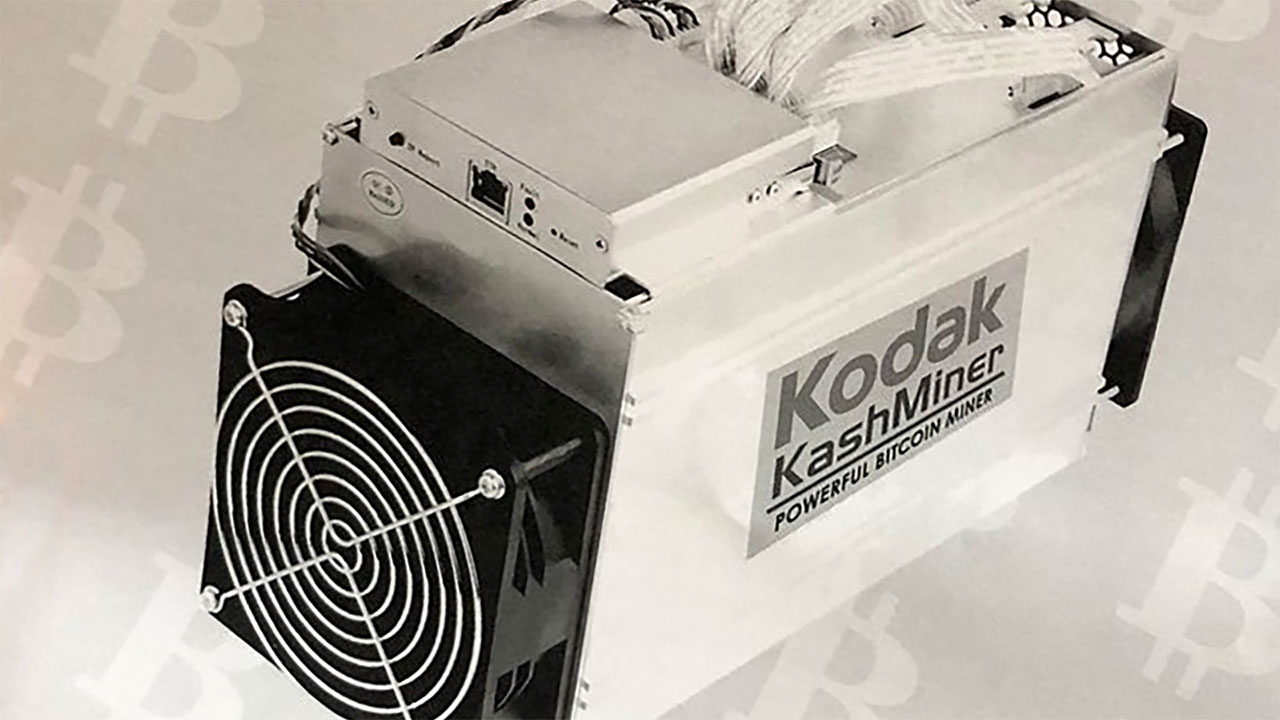Even Kodak is getting into cryptocurrency with a spectacularly opportunistic plan
KodakCoin, blockchain, and a questionable contract that would have Kodak mining Bitcoin for you after a $3,400 buy-in.

Bitcoins, blockchains, and cryptocurrencies have been making a lot of waves during recent months, and as we just wrote about yesterday, the recent surge in profitability of mining (via GPUs) has created yet another graphics card shortage. But CES makes for some strange bedfellows, and perhaps Kodak's foray into the world of blockchain technology will help alleviate the demand on graphics cards. Just kidding: it probably won't do that at all, and this is likely just one of the many, many desperate trend-chasing crypto initiatives that will assault your brain in 2018. Prepare for the worst.
Kodak, which filed for bankruptcy back in 2012, and recently turned a profit because Star Wars: The Force Awakens was shot on film, has announced several related blockchain plans. First is KodakOne digital rights management, which will be backed by blockchain technologies and the new KodakCoin. The latter will start with an ICO (Initial Coin Offering), a popular way to try to jumpstart new cryptocurrencies. The idea is that KodakOne will track usage of registered images, and when it comes across an unlicensed use of an image, it will help the photographer to get paid. This will dovetail into the KodakCoin, which will be the medium of exchange for licensing payments.
KodakCoin will go on sale on January 31, but the actual KodakOne infrastructure isn't planned for deployment until much later. A beta will release in Q4 2018, with the official launch slated for Q2 2019, if Kodak doesn't quietly abandoned this entire tenuous plan between now and then. It's not clear if KodakCoin will be a mineable cryptocurrency, but the third prong of Kodak's blockchain attack suggests it might be.
Kodak is planning to install a large number of dedicated ASICs (Application Specific Integrated Circuits) in its headquarters, and it will then offer two year contracts for sale to investors. The cost will be $3,400, after which Kodak will take half of the Bitcoin mined and the purchaser of the contract will get the other half. The suggestion is that at current price and difficulty levels, the hardware will earn $25 per day, meaning in two years the hardware will generate $18,000—and you'd get half of that.
There are all sorts of problems with this, namely that predicting Bitcoin difficulty and price is basically impossible. The fact that the mining hardware appears to be AntMiner S9 units with Kodak branding slapped on them doesn't really help. But if you have a corporate office that's sitting largely empty, as Kodak just might, using it to power mining rigs might be a way to offset some costs. And using Bitcoin ASICs instead of mining PCs hopefully means Kodak won't be contributing to the ongoing GPU shortages.
This may end up being a sweet deal for Kodak, but it reeks of bandwagoning so hard HowToGeek's Chris Hoffman called it "the dumbest shit I've seen at CES." Whatever happens, the short-term benefits of talking about blockchain technologies at CES have helped Kodak's stock price to more than double over the past day.
Keep up to date with the most important stories and the best deals, as picked by the PC Gamer team.
Jarred's love of computers dates back to the dark ages when his dad brought home a DOS 2.3 PC and he left his C-64 behind. He eventually built his first custom PC in 1990 with a 286 12MHz, only to discover it was already woefully outdated when Wing Commander was released a few months later. He holds a BS in Computer Science from Brigham Young University and has been working as a tech journalist since 2004, writing for AnandTech, Maximum PC, and PC Gamer. From the first S3 Virge '3D decelerators' to today's GPUs, Jarred keeps up with all the latest graphics trends and is the one to ask about game performance.


